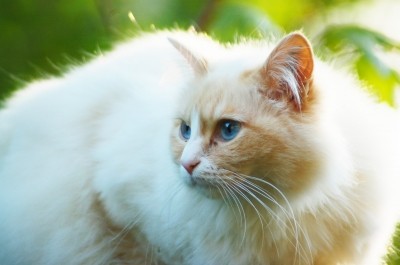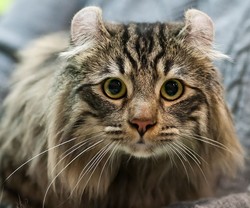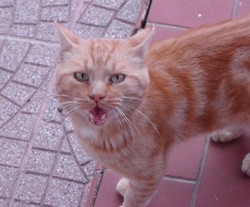
How to Identify Your Cat's Breed
Cat registry organizations currently recognize over 72 breeds of cats. Although pedigree & breed registration are a sure way to confirm your cat’s breed there other means available
 Beautiful Cat |
Recognizing a Cat
Various cat registry organizations, such as the Cat Fanciers' Association (CFA), the International Progressive Cat Breeders' Alliance (IPCBA) and The International Cat Association (TICA), currently recognize more than 72 breeds of cats. Pedigreed cats registered with these organizations must have several generations of documented ancestors that are members of a specific breed in order to be recognized as members of that breed. While a pedigree and breed registration are the surest ways to determine your cat’s breed, there are other means available, although these are less accurate. These other methods include genetic ancestry testing and comparing your cat’s appearance to the standards for various cat breeds.
Pedigrees
The surest way to identify your cat as a member of a particular breed is to know the breed of its parents. For owners of purebred cats, this is simple. Cats obtained from reputable breeders have pedigrees and registration papers that certify these cats as members of specific breeds. Cats obtained from breed rescue organizations or directly from past owners might also have such paperwork.
While paperwork is the only way to prove that your cat is a member of a specific breed, it is possible to be sure of your cat’s ancestry even if you do not have papers. If, for example, your neighbor’s two purebred Persians had kittens, you would know the offspring were Persians even if she did not register the kittens. A similar situation would occur if the neighbor had a Maine Coon and a Persian that bred. The kittens would be mixed breeds, and you would know that they were a mixture of Maine Coon and Persian.
 Registration Papers |
Cat Ancestry Test
The Cat Ancestry test is a new test from the University of California, Davis Veterinary Genetics Laboratory. The test uses a DNA sample that you collect from your cat’s cheeks and gums using a brush provided in the test kit. After you collect the sample, you send it to the lab where your cat’s DNA is compared with a large database of DNA from cats with known geographical origins and breeds.
Once your cat’s sample is tested, you receive a report that gives you some interesting facts about your cat’s genetic makeup including the animal’s relationship to the eight different cat racial groups and its similarity to 29 different feline breeds. These results are approximately 90 percent accurate. The test also gives you information about the genetics of some of your cat’s physical features such as coat color and hair length. While the results of this test could make you aware of your pet’s potential risk of certain breed-specific diseases, it is primarily done for personal interest. You cannot register your cat with any breed organization or registry based on the test results.
Find Out More on Wikipedia About Cat Breeds
List of Cat Breeds
Appearance
The least accurate and most common means of identifying a non-pedigreed cat’s breed is by its appearance. Most cat registry agencies and breed associations have the standards for specific cat breeds on their websites. Many owners use this information to try to determine their cats’ breed. By this method, if a cat looks like a Maine Coon, you call it a Maine Coon. It is important, however, to note that your cat's appearance is controlled by a relatively small number of genes, so a cat with a lot of DNA from a certain breed might not resemble that breed, while a cat with relatively little DNA from the breed might look almost like a purebred. It is also important to note that since most cats are randomly bred and not a mix of specific breeds, it is possible for a cat with no immediate ancestors from a certain breed to resemble members of the breed. Although it is enjoyable to speculate on a cat’s ancestry based on its appearance, this is the least accurate means of determining your cat’s true breed.
77 Cat Breeds
You might also like
American Curl Cats: Spontaneous Mutation in a Stray Leads to F...American Curl cats are so named because their ears curl ear-resistibly backwa...
Interesting Facts about the European Shorthair CatAre you thinking of buying a house cat? Why not get a European shorthair cat ...



 Starting on the Path Toward Financial Independenceon 06/24/2012
Starting on the Path Toward Financial Independenceon 06/24/2012
 Three Great Ways to Use Basmati Riceon 05/28/2012
Three Great Ways to Use Basmati Riceon 05/28/2012
 Herding Cats: Easy Cat Training Tipson 05/23/2012
Herding Cats: Easy Cat Training Tipson 05/23/2012
 How Oral Flea Medications Workon 02/19/2012
How Oral Flea Medications Workon 02/19/2012


Guest Comments
Thanks for the kind words. :-)
I'm a cat lover who gets my cats from shelters. I've often wondered how to tell the breed of my cats. Thanks for the guide on knowing your cats breed. Very helpful! :)K
Very interesting.